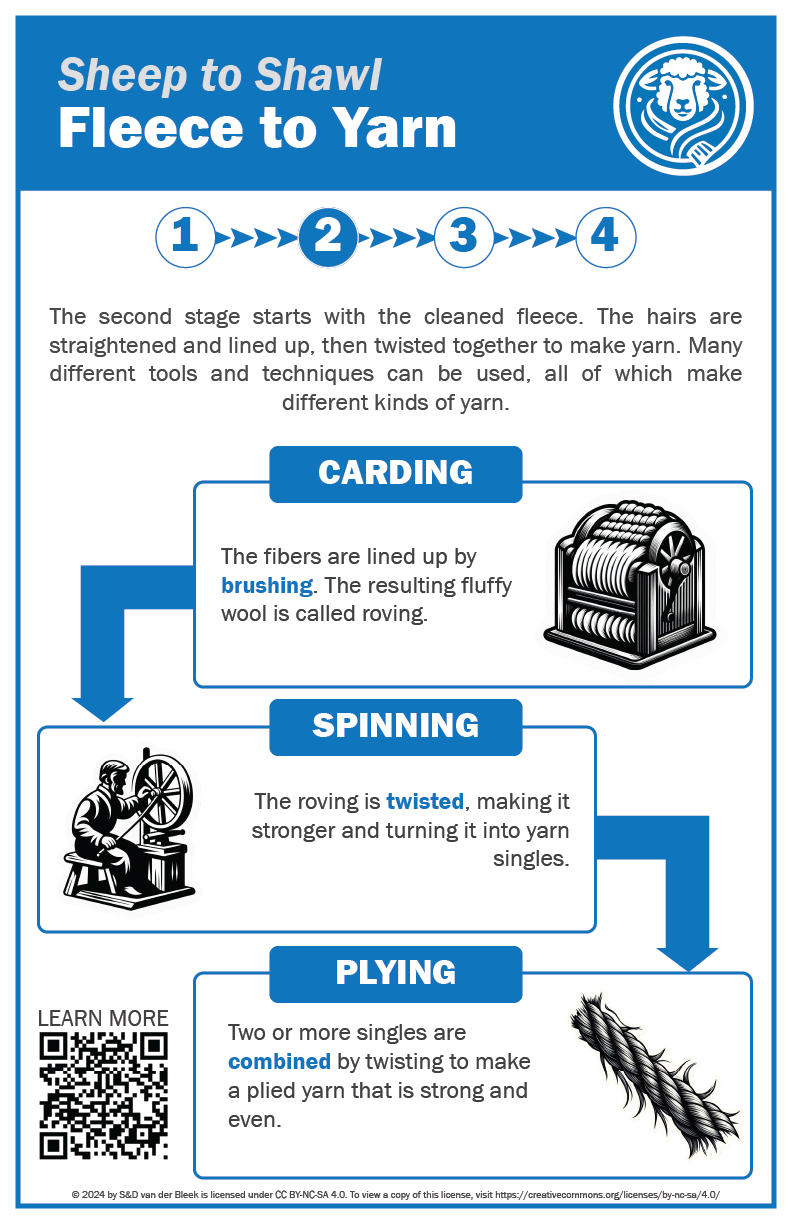Step 2: Fleece to Yarn

The second set of steps start with the now clean fleece. The fibers are untangled and ordered, then twisted together to make yarn. There are many ways to accomplish these steps, all of which change the resulting yarn.
Carding
The fibers in the fleece will be laying all different directions. Just like brushing your own hair, carding uses a series of bristles to align all the individual strands. The result is roving, a soft, easy to pull apart bundle of wool.
Spinning
At this stage the fibers aren’t strong enough to be woven into cloth. Spinning twists the fibers together so they don’t pull apart. The spinner must balance the amount of twist and quanity of fiber to produce the type of yarn they’re looking for. Each breed of sheep spins differently!
Plying
To make the yarn stronger and more consistent, multiple spun strands are twisted together. Plying combines two or more strands, using the twist introduced during spinning. By twisting the strands in the opposite direction they were spun in, they coil around each other. This makes the yarn stronger, and less likely to untwist while weaving.